Forcing Data for Single Column Models
Here we have analyzed the results from our Single Column Model (SCM)
using two sets of forcing data. The forcing data consists of the
horizontal advection of temperature, moisture and momentum. For the SCM
to produce accurate profiles of temperature and humidity, it is important
that the forcing data be as accurate as possible. Unfortunately, several
SCM groups participating in ARM have experienced large errors in the
temperature and humidity produced by their SCMs.
The first set of forcing data was produced as part of the ARM Operational
Data products and uses objective analysis to produce the horizontal
advection data from data gathered by radiosondes and wind profilers
at the ARM SGP Site. This data is currently stored
at CSU.
The second set is produced by Prof. Minghua Zhang at SUNY Stonybrook and
can be accessed via
ftp.
This product is derived using a constrained variational scheme. In addition
to the objective analysis techniques used by the first data set, heat
and moisture fluxes at the surface and top of the atmosphere are used to
constrain the data to conserve the column-integrated mass, moisture,
static energy and momentum. A manuscript which includes a detailed description
of this procedure has been submitted to the Journal of the Atmospheric
Sciences for publication (Zhang and Lin, 1996).
Two versions of our SCM were used to test the different forcing data sets.
Cloud liquid water (CLW) was not included as a variable in the first version of
the SCM, while in the second version it was included as a prognostic variable.
We ran each version our SCM for a period of 15 days (Oct 26 - Nov 9, 1994)
during the Fall 1994 Intensive Observing Period (IOP) using both sets
of forcing data. Graphs of the temperature and specific humidity difference
(SCM - Observed) are shown below.
Figures 1-4: Model version without cloud liquid water
Figures 5-8: Model version with cloud liquid water
(Click on the graph for a larger image).
ARM Forcing without CLW
Temperature Difference |
Zhang Forcing without CLW
Temperature Difference |
 |
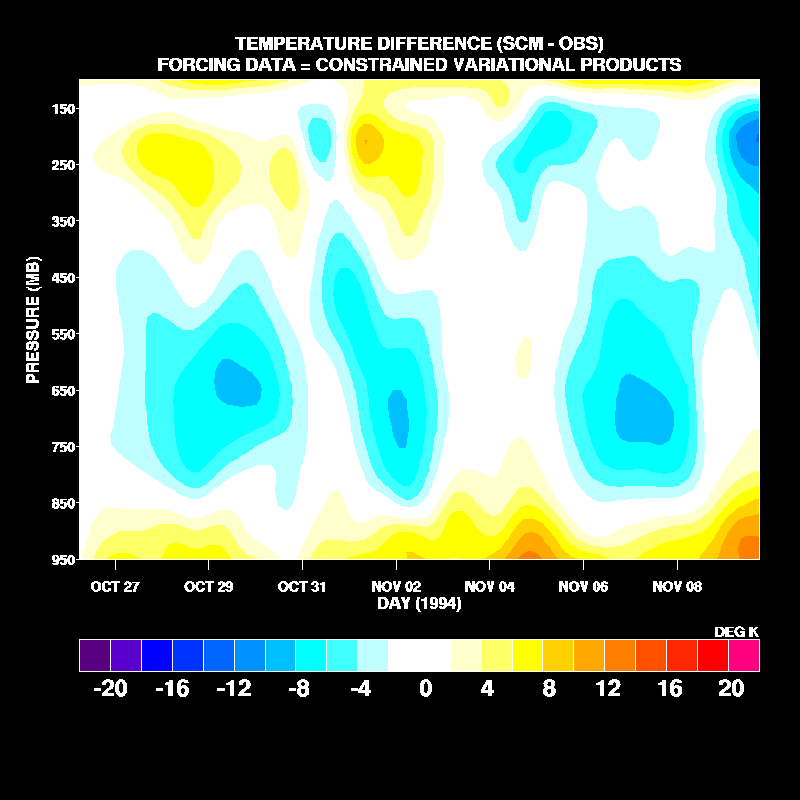 |
|
Figure 1 |
Figure 2 |
ARM Forcing without CLW
Humidity Difference |
Zhang Forcing without CLW
Humidity Difference |
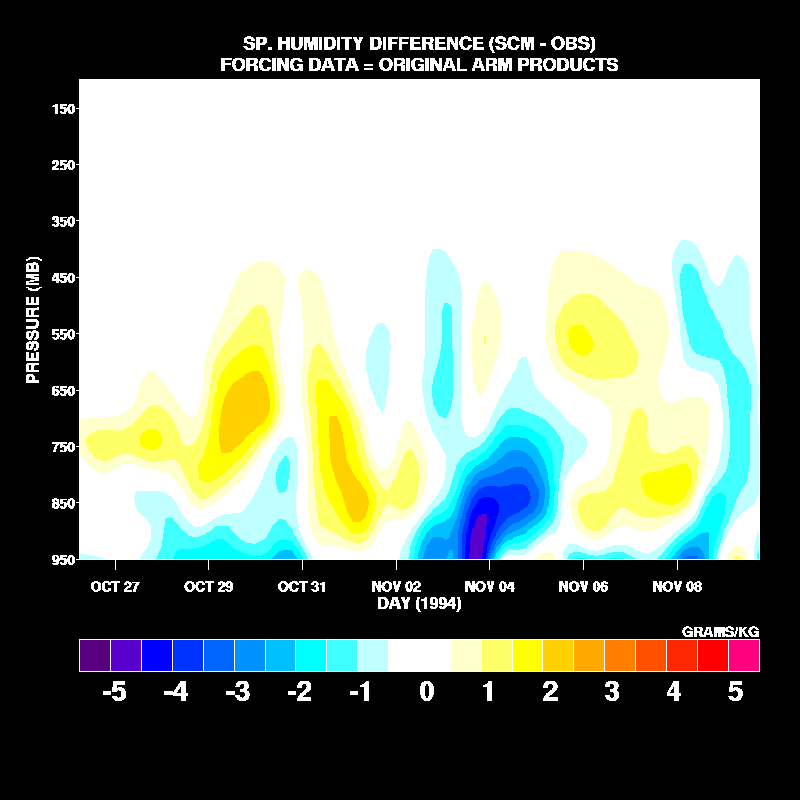 |
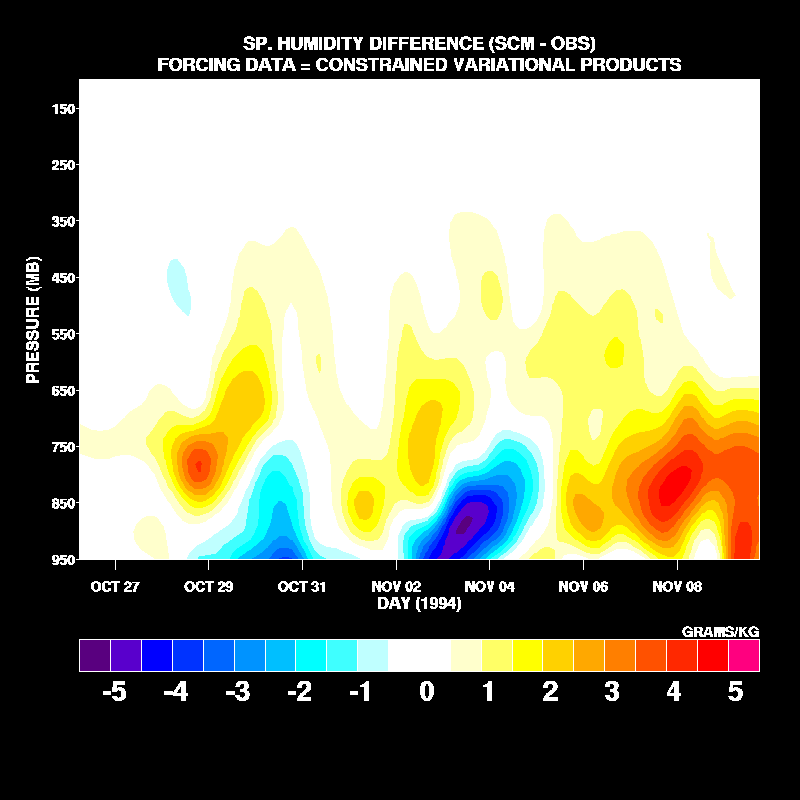 |
|
Figure 3 |
Figure 4 |
ARM Forcing with CLW
Temperature Difference |
Zhang Forcing with CLW
Temperature Difference |
 |
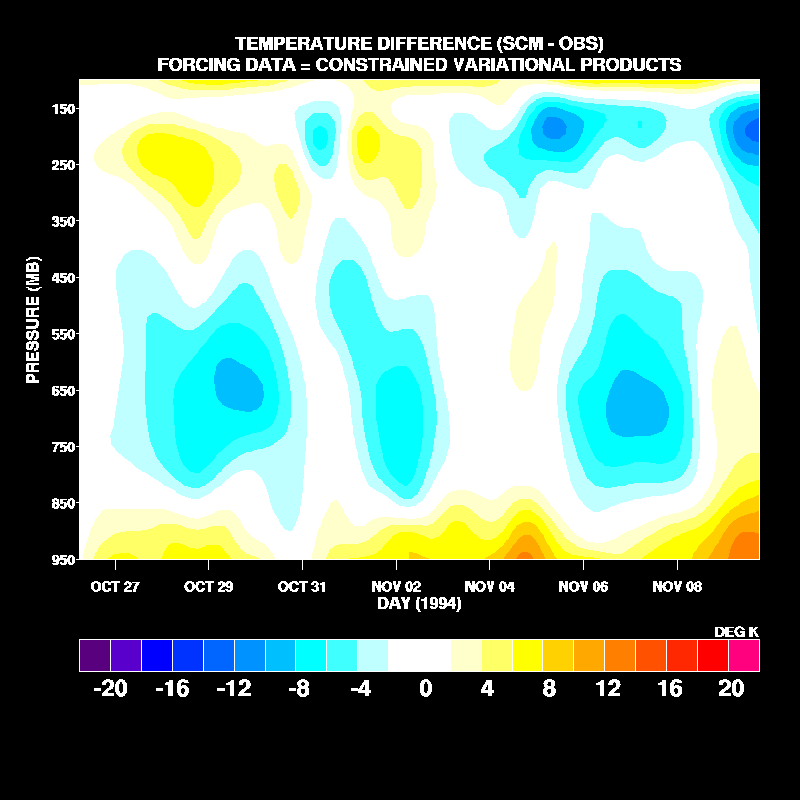 |
|
Figure 5 |
Figure 6 |
ARM Forcing with CLW
Humidity Difference |
Zhang Forcing with CLW
Humidity Difference |
 |
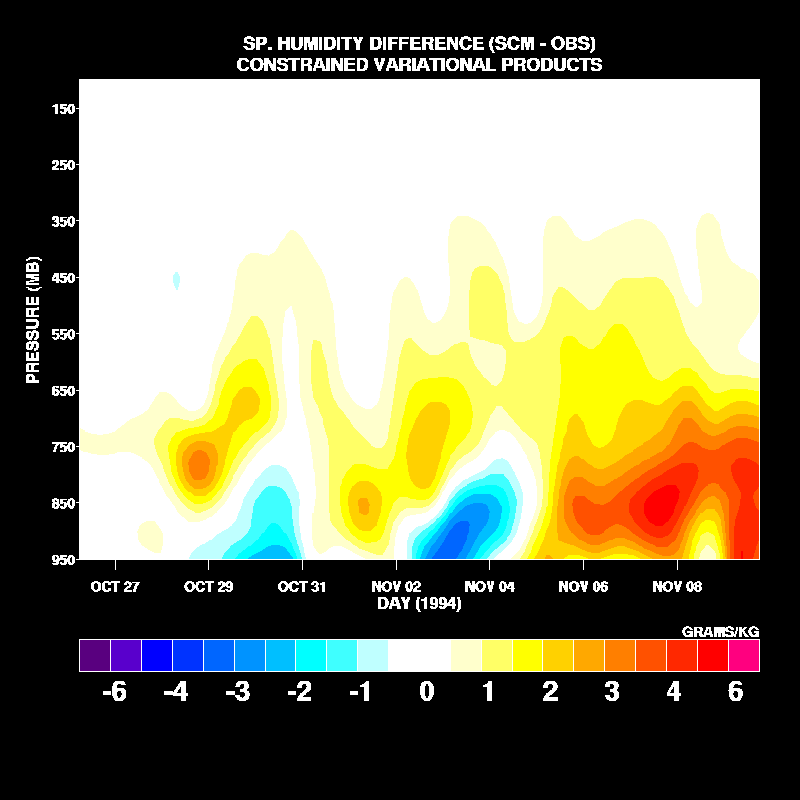 |
|
Figure 7 |
Figure 8 |
Model temperature errors are significantly reduced when the constrained
variational forcing data (Zhang) is used compared to the standard objectively
analyzed products (ARM). There appears to be very little, if any, improvement
in the model humidity fields when the variational forcing data is used.
It is important to remember that the model is not perfect, and even with
exact forcing data, there will be some difference between model results
and reality.







